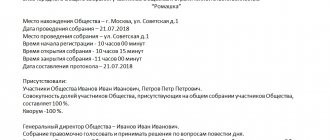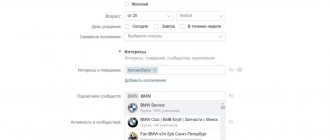IN telemarketing or telephone sales There are two main concepts – cold and hot calling. This is the basis on which any transaction, purchase, or service is built. Therefore, it is important to know what cold and hot calls are, what their fundamental differences are, how they are carried out, and what mistakes must be avoided when making them in order to achieve effective telephone sales.
What are warm calls
Telemarketing is one of the channels for distribution and promotion of products. With this tool, you can increase your company's sales volume, attract new customers, or remind old ones about yourself. Moreover, the achievement of a particular goal depends on the target audience chosen for telephone sales.
The type of telephone calls also depends on the target audience:
- Cold calling – negotiating with a potential client who is not familiar with your products and company. His need has not yet been formed. The purpose of such calls is to find new clients.
Companies in the service sector often use cold telemarketing. They buy databases of customers with certain characteristics and make random calls offering their product.
- Warm calls are a conversation with a potential consumer who already knows about your company and product. He was probably once a customer of yours or was interested in the product.
For example, let's say you sell mobile phones. A week ago you bought a smartphone. You can call the client and offer him headphones at a special offer with a discount for the purchased model.
- Hot calls – a conversation with potential consumers who themselves show interest in your product. They have already made their choice, all that remains is to bring the matter to its logical conclusion - sale.
In this case, your potential consumer, for example, has already left a request to purchase a product, all you have to do is call him and agree on the terms of the transaction.
If in the first and third cases the goals are clear and understandable - to find new customers and sell goods, respectively, then with warm calls everything is not so simple.
Warm calls are designed to remind the company about itself. To a greater extent, they perform the function of promoting a product, but often lead to sales.
In more detail, the goals of warm calls can be expressed as follows:
- Returning lost customers or those who have not purchased goods from you for a long time . The period of time allowed for the absence of purchases is the time of use of the product. For example, for a mobile phone this period is two to three years, and for a carton of milk two to three days.
- Providing information to the client about new products and services . If a consumer bought a product from you or was simply interested, you can recommend something from your range and tell him about new products that are suitable for solving his problem. It is very important to personalize your message here. You must offer products that will satisfy the needs of a specific consumer.
- Company promotion . In this case, we simply remind the client about us.
- Determining needs . This goal is the most difficult to achieve: you must, as a psychologist, identify the consumer problem that your product can solve.
If you compare cold and warm calls, you can find several quite significant differences.
| Cold calls | Warm calls | |
| Target | Attraction of new clients | Company reminder to existing customers |
| The target audience | Random interlocutors with certain characteristics | All those who are already familiar with your company and product |
| Need | Not formed | Needs definition |
Let's name the advantages of “warm” calls over “cold” ones:
- Aimed at building long-term trusting relationships with consumers;
- More often lead to product sales;
- Do not cause a negative reaction from potential consumers.
Types of clients by needs
You need to offer a product or service based on the client’s needs - this is obvious. And people purchase products according to the priorities identified in their minds, paying attention to one or another advantage that the product or service has. Among the mass of preferences that different people have, the following can be distinguished:
- prestige. This or that brand may be valued or vice versa. For some categories this is a guide to action;
- novelty. In pursuit of new collections, “fresh” gadget functions, etc., many are able to shell out a lot of money. Such a client is easy to recognize by his awareness and solvency;
- saving. The desire to spend as little as possible when purchasing the necessary thing is a very common need among people with different income levels;
- comfort. It is this need that motivates the client to purchase a number of useful things from his point of view. From his point of view, “convenient” means healthy and necessary;
- reliability. For some consumers, product reliability is the main feature to look for.
At the same time, the seller must understand what interests the client most at the moment; read more in the article on consumer needs. Is he chasing a specific brand or does he want to buy something cheaper and save a lot of money? A product can meet several or even all requirements at the same time, but one of them will always be more important than the others. Which one should be quickly determined by a professional. At the same time, an experienced seller only needs a few questions to find out the needs of a potential buyer. And having already received this information, you can move on to presenting the product from a certain perspective.
In addition to the methods of dividing clients described above, it is worth paying attention to the method of dividing clients by Jordan Belfort, better known as “The Wolf of Wall Street.” He describes this technique in the straightforward system of persuasion he formulated.
How do warm calls work?
As a rule, calls to a “warm” base do not cause as many difficulties as “cold” telemarketing. But still, they are not as simple as “hot calls”.
When you dial a customer's phone number without their desire (as happens with hot calls), you risk a negative reaction. Account managers need to understand this.
Before you make a call, you need to determine the client's need. This call should be useful for him. In addition, you should clearly indicate to yourself the frequency of calls. You should not bother the client, you should help solve his problem.
The frequency of reminders from the company about itself, as a rule, depends on the period of use of the product. The following types of goods are distinguished: consumer goods, durable goods (1-3 years), durable goods (more than 20 years).
It makes no sense to offer a client to buy a washing machine if he purchased it a week ago. The likelihood that he will be interested in your proposal is very small; most likely, you will cause irritation and indignation. In this case, you can remind the client about yourself with the help of related products.
Identifying needs is also a very important stage when making “warm” calls to customers. Primary analysis can be carried out even before talking with the client. Look at what purchases your interlocutor made and what interested him. This will allow you to set the conversation in the right direction.
In general, there is a general scenario for making warm calls. In professional language, such a script is called a script. It allows you to standardize successful conversations and improve the efficiency of telesales.
Stages of a warm call:
- Greeting and introduction. Remember that you have already been in contact with this client, so there is no need to get acquainted;
- We ask if it is convenient for your interlocutor to continue the conversation. If not, we will find out when it will be possible to call back;
- We clarify the previous fact of cooperation;
- We present the product;
- We respond to objections. It is better to prepare answers to possible questions and objections in advance. Analyze the products you are going to offer to your consumer. Find the shortcomings and justify them with advantages. For example, a higher price may be explained by better quality or greater effectiveness of the product;
- We record the purchase (or refusal) and say goodbye.
To make “warm” calls, it is best to choose employees with experience. Since there is a high probability that he will have to improvise and deviate from the script.
Your sales manager should have the following qualities:
- Be sociable, be able to win over your interlocutor;
- Be able to navigate in non-standard situations;
- Be literate;
- Prevent drifting away from the main topic of conversation.
From “cold calls” to “hot clients”
(How scripts help deal with excuses and objections from clients)
Over the past two years, I have been approached by three companies whose employees were selling services through telephone calls.
One of the companies was engaged in the sale of advertising in its printed publications, the other provided logistics services and everything connected with it: customs clearance, cargo escorting, warehousing, etc. The third sold fitness club services. Despite the fact that the companies were engaged in different types of services, had different numbers of employees, they had the same problems, the efficiency of sales managers decreased, staff turnover increased, and sales fell. After communicating with managers and analyzing the situation in the sales departments, the picture became clear. The salespeople worked only with regular customers, calling mainly those whom they knew well and with whom it was easier to negotiate. But regular customers could not increase the company's sales volume, because... their number did not increase; on the contrary, some clients periodically used the services of other companies. Some reduced the number of purchased advertising modules or cargo transportation, some went to other fitness clubs, and new clients, according to sellers, did not agree to the terms or were “in the process of negotiations.” When I started to find out how many cold calls the employees of these companies made during the day, it turned out that most employees did not make more than 5 - 10 calls per day to the cold base. And even if such calls are made, the conversion rate of cold calls was very low. Why did this happen and still happen today in many companies where salespeople must find new clients and close deals over the phone? The answer lay on the surface.
Salespeople hate cold calling !
Personally, I think this is the biggest reason why cold calling doesn't work. This is a well-known fact of human psychology; you should not expect high results and success in your work from people who hate what they do. When talking with salespeople, I asked them the same question: why do you avoid cold calls, what makes you look for reasons to postpone the call, “postpone it until tomorrow,” “after lunch,” etc. Very often the answers were repeated, and the essence of most of them concerned objections, refusals, excuses and requests to call back later or send an offer by e-mail. The motivation of salespeople decreased, because not everyone wants to constantly hear refusals or requests to call back, and in the end they completely stop calling new clients, for fear of receiving a refusal or objections from the client.
Despite the challenges of telesales, cold calling remains a viable sales strategy for many businesses today, but it only works effectively when salespeople do it right. When you pick up the phone to make a cold call, it's important to be well prepared because you only have a few seconds to grab the attention and interest of a potential client. One of the most important tools for making effective calls are scripts or templates, depending on which name you prefer.
Today's post will focus on the objections that salespeople hear when working in telesales and examples of scripts (templates) that help get around these objections.
6 typical excuses (objections) that salespeople hear on the phone.
One of the secrets of effective and successful telephone sales is knowing the main objections and excuses of the client and the ability to work with these objections. Scripts help with this, especially if you are a novice seller and your skills are not yet at the level to immediately find the right words for each client.
As an example, in this post I want to break down a few common objections or excuses that salespeople face in the initial phase of a conversation, usually during or right after the opening speech. Very often, these excuses are not true objections, but play the role of a “smoke screen” for the caller, because with their help the client wants to get rid of the seller, voicing a reason that at first glance seems valid.
Excuse #1: I'm in a meeting
When you hear such an objection, the first thing that comes to mind is: “Oh, why are you answering the phone?” This is a great technique to make the caller feel a little guilty for interrupting the prospect at such an important moment. And this technique works. The seller is completely embarrassed, he begins to apologize, says that he will call back, tries to justify himself. Meanwhile, the reception worked and the call was rejected. More prepared sellers in this case ask:
“In order not to take up a lot of time, let’s plan a time when it’s best for me to call you?”
or
“What time is best for you to call back?”
Both options are possible, but when you call again, you will most likely receive another excuse.
Try this option:
“The client’s middle name, I call only to arrange a meeting. Will Thursday suit you at two o'clock?"
what happened at the moment. To the client's excuse:
"Listen, I'm in a meeting"
you answered:
“Oh, I’m just calling to make an appointment.”
At this stage, the potential client may not agree to your offer, but his response will most likely be more specific than just “Call back later!”
Excuse #2: Call me back!
Another client excuse that doesn't just end the conversation, but leaves you with a feeling of "hope." We reassure ourselves by believing that he REALLY WANTS us to call back, and most salespeople fall for this bait. Sometimes we even suggest the time and date when we will call, and the client agrees.
The only problem: when we call again, the client is either busy again, or we come across a voicemail. Try the following answer:
“I know this feeling when things don’t allow me to interrupt for a minute; I have the same busy schedule. Let me call you back in an hour or tell me a time convenient for you.”
Another variant:
“Client’s patronymic name, I’m calling only to agree on a time for our conversation.”
(Try to control the situation and get information about the time of the call. If the client cannot talk now, then get the exact time of the call from him or offer your options).
“I'm looking at my schedule and I might call you back this evening. Well, let's say at 7:00 or 7:30. What time is more convenient for you?
Excuse #3: Email me the information.
This is also an excuse, similar to the previous one in that it creates a degree of hope. I've often seen salespeople gleefully spend 15 minutes crafting a great email with 9 attachments, all the while confidently believing that the prospect is eagerly awaiting their message with company information, etc. Don't flatter yourself! Most clients won't read your email, letter or fax. They asked you to send them something just to get rid of you. But you can bypass this answer, and here’s how to do it.
If a potential client tells you:
"Look, why don't you send me some materials"
just answer:
“Why don’t we just meet? Will next Tuesday at three o'clock suit you?
Yes Yes exactly!
“Why don’t we just meet? Will next Tuesday at 15.00 suit you?”
If you still decide to send an information letter to the client, then use the following options:
“Of course, I will send you all the necessary materials, and after reviewing this information, how soon can you make a decision?”
“What specific information do you need in order for you to agree to continue our conversation?”
After this, you can ask the client a series of clarifying questions regarding his expectations, needs, and the decision-making process in his organization.
Excuse #4: I'm busy!
This is not exactly an excuse, perhaps the client is really busy at the moment, but the end result is still the same. The telephone salesman feels guilty for barging in with his call at the wrong time. Quickly getting his bearings, he tries to rectify the situation by asking when the best time to call would be. The client replies that there is no better time, just try calling later. The call was interrupted. “ I’m at a meeting” may work
Or you can use the following templates:
“I am familiar with this situation, the client’s first name and patronymic, I also have everything scheduled down to the minute. Let's compare our schedules and find a time when we can talk. I think 10 minutes will be enough. How would you like this option: is today, say, 4:30 p.m. suitable?”
(just don't forget to call back!)
“Okay, client’s first and middle name, let’s schedule a time convenient for you. One question: when we return to our conversation, what information will you need from me first?”
Here you can list the main points of your proposal.
“I will be happy to call you back at a time convenient for you. When can you talk, and what points in our proposal might interest you most?”
Excuse #5: I'm not interested in this right now / We don't need anything right now
The politely spoken phrase “We don’t need anything right now” works every time without fail. The sales representative or manager does not want to appear pushy and aggressive and immediately backs down. If there is no need, then there is no opportunity to sell, right?
The conversation usually ends with the seller promising to call back “in a few weeks” when “perhaps the situation will change.” Meanwhile, the client again avoided the conversation, and the seller let the client go, hoping that in a couple of months the client would show interest.
Possible answers to this excuse:
Option 1.
Client: “We’re not interested in that right now.”
Salesperson: “This is a normal reaction to any proposal when my clients hear it for the first time, but then they have the opportunity to understand how they can benefit from our services (products). That's why I suggest you meet! Will Wednesday at 4:30 pm suit you?”
Option 2.
Client: “No, thank you, we are satisfied with what we have...”
Seller: “It’s great that you train your employees (list the client’s services). My ABC clients told me the same thing until they got acquainted with our training system (our offer, software, product). They saw that our program (product, service, software) could really help them in increasing sales efficiency (service, budget savings, etc.)" "Great, many of my clients with whom we were just starting to cooperate told me the same thing the very words. But after we learned more and looked at our proposal, we were glad that we took a few minutes to talk. They were interested in our...
(here briefly describe the main characteristics of your offer or service and ask the question:
“Do you think this will work for you?”)
Excuse #6: We are satisfied with our current suppliers
Like the excuse “ We don’t need anything right now,” this objection may be based on a real situation. It works because the seller often does not find the right answer to this objection, accepts the client's words as truth, thereby justifying his defeat and hangs up. A customer may indeed be happy with their current suppliers, but a really good offer or a cool new product can make all the difference.
Let's look at a few examples of responses to this client phrase:
“Yes, I know you work with XYZ. That's why I decided to call you. Most large companies like yours use multiple vendors because each one does part of the business a little differently and a little better than the others. What if our proposal could improve... (list some aspects of their business that you know about). If you decide that it doesn't suit your needs at the moment, at least you will have alternative options in case your opinion changes in the future. Let me tell you how... (list the clear advantages of your proposal and how they will help change the client’s current situation for the better: saving budget, resources, time, etc.)"
"Great. The best way to see the value of our product (service, program, service, etc.) is to compare the results and ease of use of our product with similar offerings on the market. Do me a favor, let's meet and I'll show you how you can easily (save money, improve quality of service, reduce delivery times, etc.) without a big investment. After that, you will judge for yourself whether it suits you or not. What time suits you best? What if on Friday at 1:30 pm or we can meet on Monday at 11:00 am.”
(Offer an alternative, let the client “himself” decide on the time of the meeting)
“Yes, I know that you already have a supplier. And surely comparisons of the current supplier with other offerings seem like comparing apples to apples? As you know, technology changes quickly, and we are able to accomplish in a month what other companies spend three to four months doing. Let's try the next option - we will make a comparative analysis of what you get now and what you will get using our service (product, software, etc.), and if our solution does not suit you, you will immediately say “ no” and we will part as friends. How do you like this proposal? I think that's fair enough!"
The client may have a great many objections and excuses, and it is unlikely that it will be possible to list them all in one article. Not 100% of the time it is possible to overcome these excuses. But if the seller is prepared in advance to hear the client’s objections and is armed with several templates to neutralize them, then the chance that the client will turn from a potential one into a permanent one increases several times.
If you are engaged in telephone sales, then you know that pre-thought-out phrases that relate to the client’s possible needs, desires, and fears help to melt the ice of mistrust much faster and transfer the client from the category of promising to the category of profit-generating ones. In the near future, I plan to record a video course on a topic such as dealing with price objections, as well as provide several scripts that destroy these objections.
If this topic is interesting to you, subscribe to the newsletter and you will be the first to receive all the latest news about sales and negotiations.
Example of a warm calling script
- Good afternoon, “Client Name”! My name is “your name”, I am a representative.
- Can you talk now? (If the client answers “no,” then we ask the second question: “When can I call you back to continue the conversation?”)
- You recently ordered a blue children's shirt from us.
- Today we started a new promotion “Get your child ready for school with a 10% discount”, we would like to offer you skirts and trousers for girls at a discount in addition to the shirt. We can send our catalog to your email so that you can familiarize yourself with the range.
- Let's imagine that the client said that he is already familiar with the assortment. We say: “This is a new arrival for the new school season, for now we are offering it only to our clients, since the supply is limited.”
- Goodbye! We look forward to seeing you again in our store.









